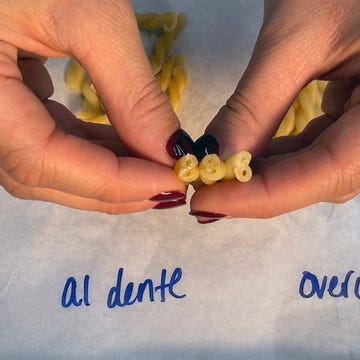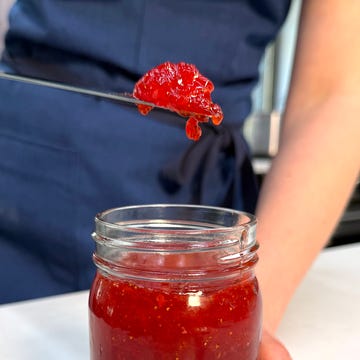Let’s be real: There’s maybe nothing more heartbreaking come dinnertime than overcooked, mushy pasta. Not even the best pasta sauces can fix that travesty! To avoid it, most recipes call for pasta cooked al dente, a term that’s used to describe the toothsome (it literally means “to the tooth” in Italian), slight bite that pasta should retain when it’s perfectly cooked. Learning to cook your pasta to al dente will elevate all of your future pasta nights; it’s worth it to get it right. Here’s what you need to know.
Why Undercook Your Pasta?
Cooking pasta al dente allows for some carryover cooking to happen once it’s out of the pot, whether that’s in a colander, a pot, or a skillet. It means you can finish cooking your pasta in sauces (such as Alfredo or arrabbiata) without fear of overcooking. Al dente pasta absorbs more of the sauce while significantly contributing to a silkier, creamier result, and it’s especially good for when you need to add your cooked noodles to a skillet while it's still on the heat, like you would for cacio e pepe.
Side note: Cooks in Italy often cook their pasta to a stage even MORE toothsome called al chiodo, meaning “to the nail,” but that’s for another article.
How To Cook Your Pasta Al Dente
Food Editor Francesca Zani (from the video above) lays out all her top tips for cooking perfectly al dente pasta here, but if you’re the type of person who wants an easy rule to follow, this one’s golden: Always cook your pasta for less time than the box calls for. Pour your noodles into salted boiling water, set the timer for at least 3 minutes less than the recommended cook time (some boxes will list an al dente cook time, which you can typically trust), test a noodle to make sure it has a slight chew, then drain it.













